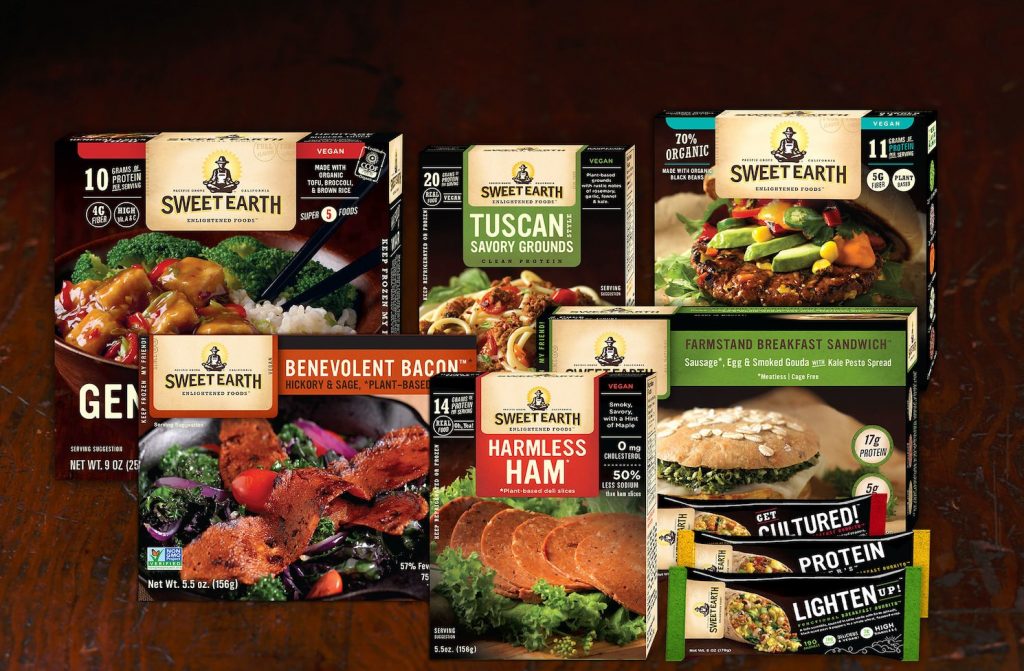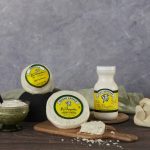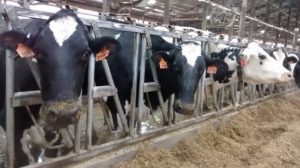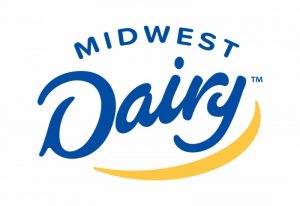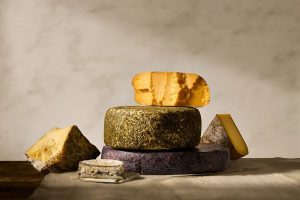
More recently, Oatly’s IPO fetched an initial valuation of $10 billion in May.
Driving market interest in these companies, consumer demand for more sustainable meat and dairy alternatives has soared.
Case in point: In March, Starbucks began offering oat milk as a dairy alternative, only to run out a month later due to high demand. In fact, it seems nearly every national restaurant chain has a plant-based alternative on its menu, whether it’s the Impossible Whopper at Burger King, the McPlant at McDonald’s, the Impossible Slider at White Castle or the Non-Dairy Dilly Bar at Dairy Queen. Even one of the world’s most famous Michelin-starred restaurants, Eleven Madison Park, reopened its doors in New York after the pandemic with an entirely plant-based menu. The demand for alternative meat, dairy and other products is likely just beginning.
A market on the move
A 2019 study by DuPont Nutrition & Health found that 65 percent of global consumers are eating and drinking more plant-based foods and beverages, and many are doing so because of the reduced environmental impacts compared to traditional products. Consumers are increasingly aware of the environmental impact of raising animals for human consumption. Global livestock accounts for 14.5 percent of global anthropogenic greenhouse gas (GHG) emissions, which is 10 to 50 times more than plant-based alternatives. Even the lowest-impact animal products are significantly more resource-intensive than the average vegetable protein.
The Good Food Institute found that plant-based meat uses between 47-97 percent less land, 72-98 percent less water and produces 30-90 percent less GHG emissions than traditional meat products. Meanwhile, alternative milk products have similarly lower environmental impacts when compared to traditional milk.
“Investors have indicated that, for many companies, an alternative meat or dairy strategy can have significant implications not only for the environment but for the firm’s financial statements and market valuation.”
As consumers become more aware of the environmental implications of their food choices, they are seeking out new and often innovative products. It’s impossible to know exactly how large the alternative meat market will get, but estimates by Boston Consulting Group project that alternative meat could represent 22 percent of the total market by 2035 which would equate to a $290 billion market, up from roughly $4.3 billion in 2020. AT Kearney has made even more aggressive projections, estimating that by 2035 alternative meat could account for 45 percent of the meat market, and up to 60 percent by 2040.
A shifting competitive landscape
While the market may be relatively small today, rapidly shifting consumer demand has captured the attention of food and beverage industries. Just months apart in late 2019 and early 2020, Dean Foods and Borden Dairy, both large U.S. dairy producers, filed for bankruptcy. In both cases, the financial struggles were at least partially attributed to competition from non-dairy alternatives.
Borden stated that “in recent years, dairy products have begun to compete with other replacement non-dairy nutritional products and beverages for consumer sales, which has contributed to demand decreases” for traditional dairy milk. This will come as no surprise to anyone who has taken a close look at their grocer’s shelves, where alternatives such as almond, soy, rice and coconut milk are gaining more space. In fact, in the U.S., consumption of dairy milk has declined 25 percent over the past two decades.
These changes in consumer demand present risks to food and beverage companies, but they can also be seen as an opportunity — and not just for upstarts such as Beyond Meat or Oatly, but for traditional meat and dairy companies as well.
In June 2020, JBS, the world’s largest meat company, started selling its own line of plant-based burgers and sausages, and more recently debuted the first products by Ozo, a subsidiary of JBS focused on plant-based protein. Nestlé has doubled down on its plant-based efforts after buying Sweet Earth Foods, a plant-based manufacturing company, in 2017 and more recently investing $103 million to build a new plant-based manufacturing facility in China. Unilever has even committed to reaching $1.17 billion in alternative product sales by 2027.
Investors are paying attention
The Value Reporting Foundation’s Sustainability Accounting Standards Board (SASB) began to dive into research related to alternative meat and dairy products in early 2020. The project was driven in large part by the rise in consumer demand and clear evidence of both environmental and financial impacts related to the shift towards alternatives. Through our research and consultation, we’ve learned that companies and investors believe this changing consumer demand is here to stay, and companies in certain industries will likely need to adapt to mitigate risk and capture market share.
As our work has continued over the past year and a half, market interest in this issue has only intensified, which isn’t surprising given how quickly these products are growing and becoming mainstream. Investors have indicated that, for many companies, an alternative meat or dairy strategy can have significant implications not only for the environment but for the firm’s financial statements and market valuation.
SASB standards are designed to help companies more effectively communicate to investors how they are managing the subset of environmental, social and governance (ESG) factors most likely to affect the creation of enterprise value over the short, medium and long term. Our research and consultation efforts have suggested that there may be a way to enhance certain SASB industry standards by adding disclosure topics and metrics associated with alternative meat and dairy products.
In response, in May, the standards board initiated a standard-setting project to explore possible updates to its standards for the meat, poultry and dairy, food retailers and distributors, and processed foods industries, which our research identified as the most likely to be significantly affected by the rise of alternative products.
Industry-specific impacts
For companies in the meat, poultry and dairy industry, the emergence of alternative products is already affecting business models. Similar to JBS, many companies are embracing alternative meat and dairy products as a business strategy to manage the environmental impacts of their products and to meet the growing consumer demand for more sustainable alternatives.
The SASB meat, poultry and dairy standard contains no disclosure topics or metrics that address alternative products or strategies to manage the environmental profile of the product portfolio. Depending on our findings, future updates could include the revision of existing metrics related to supply chain management and/or the addition of a new disclosure topic to capture a company’s consideration of environmental issues in their product development.
“Our research suggests there may be a way to enhance certain SASB industry standards by adding disclosure topics and metrics associated with alternative meat and dairy products.”
Meanwhile, food retailers are also using alternative meat and dairy products as a business strategy to adapt to changing consumer preferences while also managing the impacts of their private-label products or of their broader supply chains. For food retailers, this standard-setting project could result in the revision of existing metrics related to supply chain management or the addition of a new disclosure topic to capture the company’s consideration of environmental issues in managing product portfolios.
Finally, for companies in the processed food industry, growing consumer awareness of the environmental impacts of their diets could affect which product lines food manufacturers prioritize with R&D investment or significantly influence merger and acquisition strategies to maintain or grow market share. Alternative meat or dairy products could also affect supply chain considerations. Therefore, the research could result in enhanced disclosure topics or metrics related to product sourcing as well as how a company considers the ESG impacts of products in planning its R&D or acquisition spending.
Market input did not suggest that alternative products were likely to have a significant financial impact on the restaurant industry. However, market trends are very dynamic, and this is an area the SASB Standards Board will continue to monitor for significant financial impact or investor interest.
Conclusion
As markets evolve, so do the strategies used by management and the information needs of investors. Standard-setting must keep pace. We welcome your engagement as we evaluate approaches to standardized disclosure on this important and rapidly developing issue. Please contact us if you would like to be involved in the project or provide feedback.
